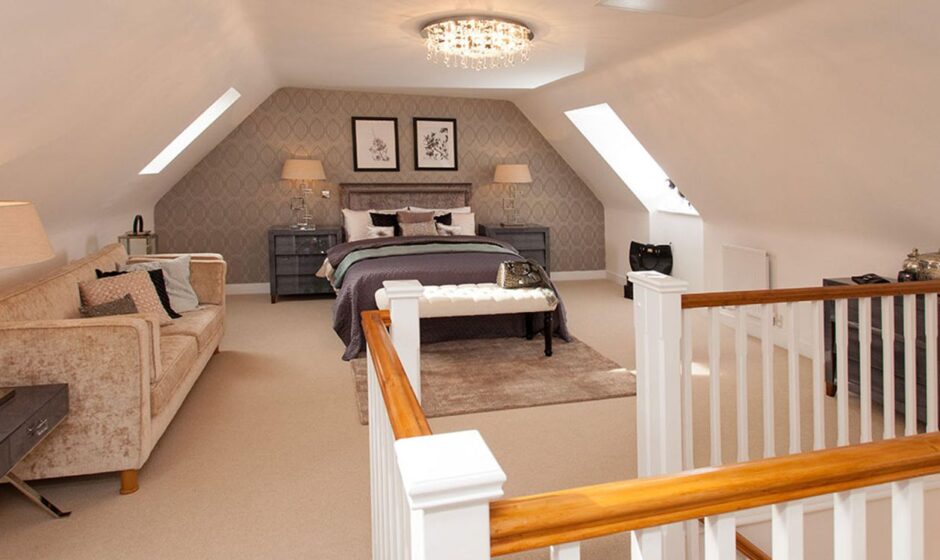Homeowners across the UK and beyond are finding new and innovative ways to maximize the space in their homes, and one of the most popular choices is a loft conversion. Converting a loft or attic into a usable living area is an excellent way to add value, space, and functionality to a home without the expense or disruption of building an extension. In this post, we’ll cover the basics of loft conversions, including types, benefits, costs, and tips for a successful project.
What is a Loft Conversion?
A loft conversion involves transforming an existing attic or loft space into a habitable room. This new area can be used as an additional bedroom, home office, playroom, or even a bathroom, depending on the homeowner’s needs. Loft conversions are a popular option because they use existing, under-utilized space in the home, and generally don’t require the extensive groundwork or structural alterations associated with other types of home additions.
Benefits of a Loft Conversion
1. Increased Property Value
Adding an extra room or two to your home can significantly increase its resale value. Loft conversions can yield up to a 20% increase in home value, making them a worthwhile investment. For families needing more space, it’s often a more cost-effective option than moving to a larger home.
2. Maximizing Unused Space
Most homes have unused loft spaces that are filled with old belongings or simply left empty. Converting the loft turns this underutilized area into something functional, helping homeowners get more out of their home’s existing square footage.
3. Creating a Versatile Space
One of the best aspects of a loft conversion is the versatility it offers. Whether you need an extra bedroom, an office, a gym, or even a private studio, loft conversions can be tailored to meet specific needs. The added space can serve different functions over time, adapting to changing family needs.
4. Enhancing Natural Light
By adding windows or skylights during a loft conversion, you can bring in much-needed natural light to what was once a dark, unused area. This can make the home feel more spacious, airy, and welcoming.
Types of Loft Conversions
There are several types of loft conversions to choose from, each with its own set of characteristics, costs, and benefits. Here’s a quick overview of the most common types:
1. Dormer Loft Conversion
A dormer loft conversion is one of the most popular options as it’s relatively cost-effective and suitable for a range of property types. A dormer is a box-like structure added to the roof, which increases the internal space by adding headroom. Dormer conversions allow for vertical walls and flat ceilings, making the new room feel more like a traditional living area.
2. Hip-to-Gable Conversion
This type of conversion is ideal for detached or semi-detached homes with a hipped roof. The process involves converting the sloping part of the roof (the “hip”) into a vertical wall, which increases the usable space. Hip-to-gable conversions are popular with homes that have limited loft space and need more headroom.
3. Mansard Conversion
Mansard conversions are a more extensive option and often require significant structural changes. This type of loft conversion involves changing the entire roof structure, creating a flat roof with almost vertical walls. Mansard conversions offer maximum space and are typically chosen by homeowners wanting the most luxurious and spacious conversion. However, they are generally the most expensive option.
4. Velux or Roof Light Conversion
Velux conversions are one of the simplest and most cost-effective options, as they don’t require structural changes to the roof. Instead, windows are added directly to the existing roof structure. While Velux conversions may not provide as much additional headroom as other options, they are ideal for homes with high roofs and are typically less disruptive and quicker to complete.
Costs of a Loft Conversion
The cost of a loft conversion varies based on factors such as the type of conversion, the size of the loft, and location. Here’s a rough estimate for each type:
- Dormer Conversion: Starting from £20,000 to £30,000
- Hip-to-Gable Conversion: £25,000 to £40,000
- Mansard Conversion: £40,000 to £70,000
- Velux Conversion: £15,000 to £20,000
These are just starting prices and can vary widely depending on customization, structural requirements, and other design elements. While loft conversions are an investment, they can add substantial value to a home, often exceeding the cost of the project when the property is sold.
Planning Permission and Regulations
In many cases, loft conversions are considered permitted development, meaning they don’t require planning permission. However, this depends on factors like the size of the conversion, whether the property is in a conservation area, and any additional extensions or changes to the structure. It’s essential to check with your local planning authority to ensure compliance.
You will, however, need to adhere to Building Regulations. These regulations cover essential safety aspects, including structural integrity, fire safety, insulation, and proper stair access. Hiring a qualified architect or builder who understands these requirements can help streamline the process.
Tips for a Successful Loft Conversion
1. Work with Experienced Professionals
Hiring skilled professionals is crucial for a successful loft conversion. Architects, structural engineers, and builders with experience in loft conversions can provide valuable insights, ensure compliance with regulations, and deliver high-quality results.
2. Plan for Storage
A common issue with loft conversions is limited storage space, particularly in dormer and Velux conversions where headroom may be restricted. Consider adding built-in storage solutions, like shelving units or storage drawers in sloped ceilings, to make the most of the available space.
3. Choose the Right Type of Stairs
Installing stairs to the loft is essential, but it’s also a space consideration. Spiral staircases, retractable stairs, or compact designs can help you save space. Make sure the stairs are comfortable to use and meet building regulation requirements.
4. Consider Lighting Options
Natural light is essential for making the loft feel spacious and inviting. Installing large windows or skylights can make a huge difference. For evening lighting, consider spotlights or wall sconces to keep the room feeling bright and open.
5. Think About Insulation and Ventilation
Proper insulation is critical in a loft conversion to keep the room comfortable year-round. Make sure the walls, roof, and floor are adequately insulated, and incorporate ventilation to prevent condensation and ensure airflow.
Potential Uses for Your Loft Conversion
Once completed, a loft conversion can be used for many purposes, including:
- Guest Bedroom: Ideal for hosting friends and family, complete with its own bathroom.
- Home Office: A quiet, private space for remote work or study.
- Playroom: A dedicated area for children, keeping toys and activities contained.
- Home Gym: Create a personal workout space without needing to leave the house.
- Private Retreat: Transform the loft into a cozy, personal sanctuary with a reading nook or meditation space.
Conclusion
A loft conversion offers a fantastic way to increase your home’s living space and overall value without the need to extend the property footprint. Whether you’re seeking a new bedroom, a home office, or simply a more functional space, a well-executed loft conversion can transform your home, providing both practical and financial benefits.
If you’re considering a loft conversion, consult with professionals to understand your options and develop a design that meets your specific needs and budget. With careful planning, a loft conversion can be one of the most rewarding home improvement projects, enhancing both your living experience and the value of your property.




